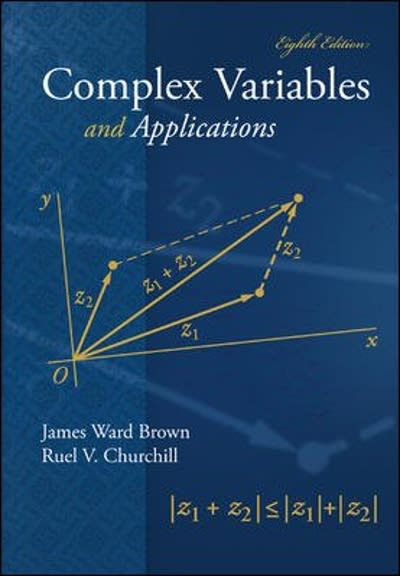Question
You participated in the facial recognition lab. That exercise is the basis for the mini lab report. At the end of the exercise you were
You participated in the "facial recognition lab". That exercise is the basis for the mini lab report. At the end of the exercise you were given a number of "hits" which is operationally defined as the number of correct responses.
The data below is your data set for your mini lab. For this assignment, you are the researcher. You gave the facial recognition lab to 40 students, 20 males and 20 females. The data set below contains the number of correct hits for each subject.
Complete the calculations below based on the data provided.
Males | Females |
3 | 8 |
6 | 8 |
8 | 7 |
5 | 8 |
6 | 9 |
6 | 10 |
6 | 8 |
5 | 8 |
3 | 9 |
3 | 10 |
8 | 7 |
6 | 9 |
9 | 8 |
5 | 9 |
4 | 8 |
5 | 9 |
7 | 8 |
7 | 8 |
6 | 7 |
6 | 9 |
Question 1 (1 point)
Saved
Calculate the Mean number of correct responses (hits) for male subjects.
Round your answer to the nearest hundredths place.
For example: 1.11
Question 1 options:
| Question 2 (1 point) Calculate the Standard Deviation (SD) of the correct responses for male subjects. Round your answer to the nearest hundredths place. For example: 1.11 Question 2 options:
|
You participated in the "facial recognition lab". That exercise is the basis for the mini lab report. At the end of the exercise you were given a number of "hits" which is operationally defined as the number of correct responses.
The data below is your data set for your mini lab. For this assignment, you are the researcher. You gave the facial recognition lab to 40 students, 20 males and 20 females. The data set below contains the number of correct hits for each subject.
Complete the calculations below based on the data provided.
Males | Females |
3 | 8 |
6 | 8 |
8 | 7 |
5 | 8 |
6 | 9 |
6 | 10 |
6 | 8 |
5 | 8 |
3 | 9 |
3 | 10 |
8 | 7 |
6 | 9 |
9 | 8 |
5 | 9 |
4 | 8 |
5 | 9 |
7 | 8 |
7 | 8 |
6 | 7 |
6 | 9 |
Question 1 (1 point)
Saved
Calculate the Mean number of correct responses (hits) for male subjects.
Round your answer to the nearest hundredths place.
For example: 1.11
Question 1 options:
| Question 2 (1 point) Calculate the Standard Deviation (SD) of the correct responses for male subjects. Round your answer to the nearest hundredths place. For example: 1.11 Question 2 options:
|
Step by Step Solution
There are 3 Steps involved in it
Step: 1

Get Instant Access to Expert-Tailored Solutions
See step-by-step solutions with expert insights and AI powered tools for academic success
Step: 2

Step: 3

Ace Your Homework with AI
Get the answers you need in no time with our AI-driven, step-by-step assistance
Get Started


